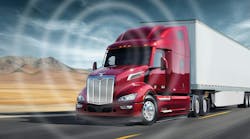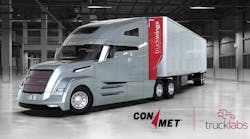Change is inevitable, and oftentimes it’s hard. The implementation of new technologies and processes can seem so far ahead of current business practices, that it may seem far-fetched to believe we’ll see change anytime soon. But, somehow, slowly and all at once - change happens.
This may be attributed to the fact that we often learn about new technologies months or years before they’re actually introduced into our everyday lives. That is because small changes happen incrementally. Looking back, it may seem as though change happened all of a sudden, but there was a slow evolution from point A to point B.
One example we can look to is automated vehicle technologies. In May, the U.S. Postal Service partnered with autonomous truck developer TuSimple to pilot SAE Level 4 autonomous trucks on U.S. roadways, routed between Phoenix and Dallas. But, the foundation of automated systems goes back as far as 1996 when anti-lock braking systems were mandated on heavy duty trucks. Almost a decade after that, electronic stability control systems were introduced. In 2015, radar, cameras and sensors allowed for lane departure warning, blind spot detection, and more. It’s been a long time coming.
The same goes for any number of other vehicle technologies, such as tire monitoring and auto-inflation systems, or telematics and vehicle tracking.
We know change is coming, so it’s best to stay educated and understand how it will impact the future of your fleet.
Inundated by data
The ability to collect and analyze the numerous data from vehicle systems has driven much of this change – whether it's the process of collecting data (via sensors), how to organize and analyze data (telematics providers), or what to do with that data (changing maintenance practices). As fleets understand how to harness this data and translate it into usable information, it will continue to help optimize the entire maintenance operation.
This issue of Fleet Maintenance in particular highlights some of the changes we continue to see: the availability and current features for computerized maintenance management system software, a look at how some fleets are using predictive maintenance practices to optimize vehicle service, and the increased use of sensors to collect vehicle performance data.
Our industry is on the cusp of change – slowly but surely. Data has continued the push to understanding the operation and requirements of a vehicle’s component or system, and has helped with predicting what may happen before an event occurs.
Preventive versus predictive
Keep in mind that predictive maintenance can only get us so far. There are still practices fleets will continue to maintain to ensure the longevity of equipment, without sacrificing downtime.
It is important to define the difference between preventive maintenance and predictive maintenance (sometimes referred to as condition-based maintenance). Preventive maintenance is viewed as a measure to minimize vehicle downtime. Predictive maintenance, on the other hand, aims to maximize uptime. What’s the difference?
Preventive maintenance considers previous failures of components, systems, or vehicles in order to create a model of maintenance to prevent future vehicles from breakdowns.
Predictive maintenance relies on the analysis of vehicle data and regular or continuous monitoring on the condition of the system to stop that failure before it even occurs.
Fleets will continue to rely on both preventive and predictive maintenance for the foreseeable future.
“What you’ll see is more of a hybrid where you’re utilizing both,” says Matt Capot, vice president of maintenance at Transervice, a logistics company. “As [processes] get fine-tuned a little better, maybe the predictive maintenance percentages move up a little, but I don’t think you’re going to diminish or fade out preventive maintenance.”


